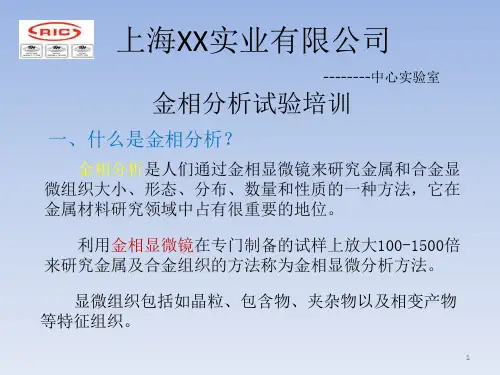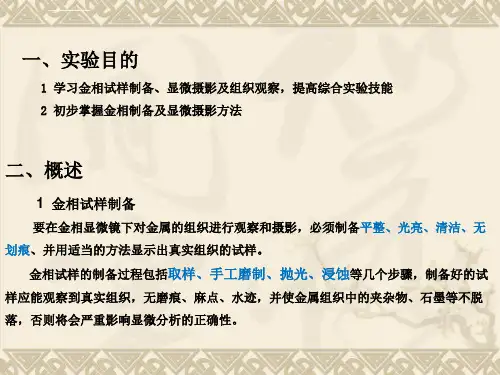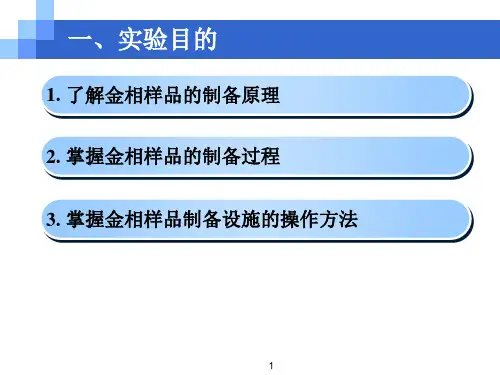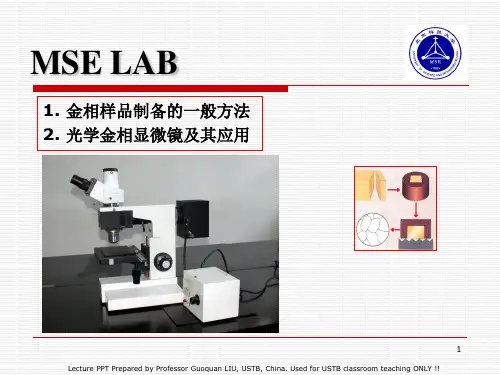The preparation process:
1. Cutting a small representative piece of the metal to be studied. 2. Small samples may need to be mounted. 3. Grinding is done using rotating discs covered with silicon carbide paper and water, or just using silicon carbide paper on a glass plate. There are a number of grades of paper, with 180, 240, 400, 600, 1200, grains of silicon carbide per square inch. 180 grade therefore represents the coarsest particles and it is the grade to begin the grinding operation. 4. Rough and Final Polishing. The polishers consist of rotating discs covered with soft cloth impregnated with a pre-prepared slurry of hard powdery particles (for example, Al2O3, the size ranges from 0.5 to 0.03 m). 5. Etching. The purpose of etching is two-fold. Grinding and polishing operations produce a highly deformed, thin layer on the surface which is removed chemically during etching. Secondly, the etchant attacks the surface with preference for those sites with the highest energy, leading to surface relief.










